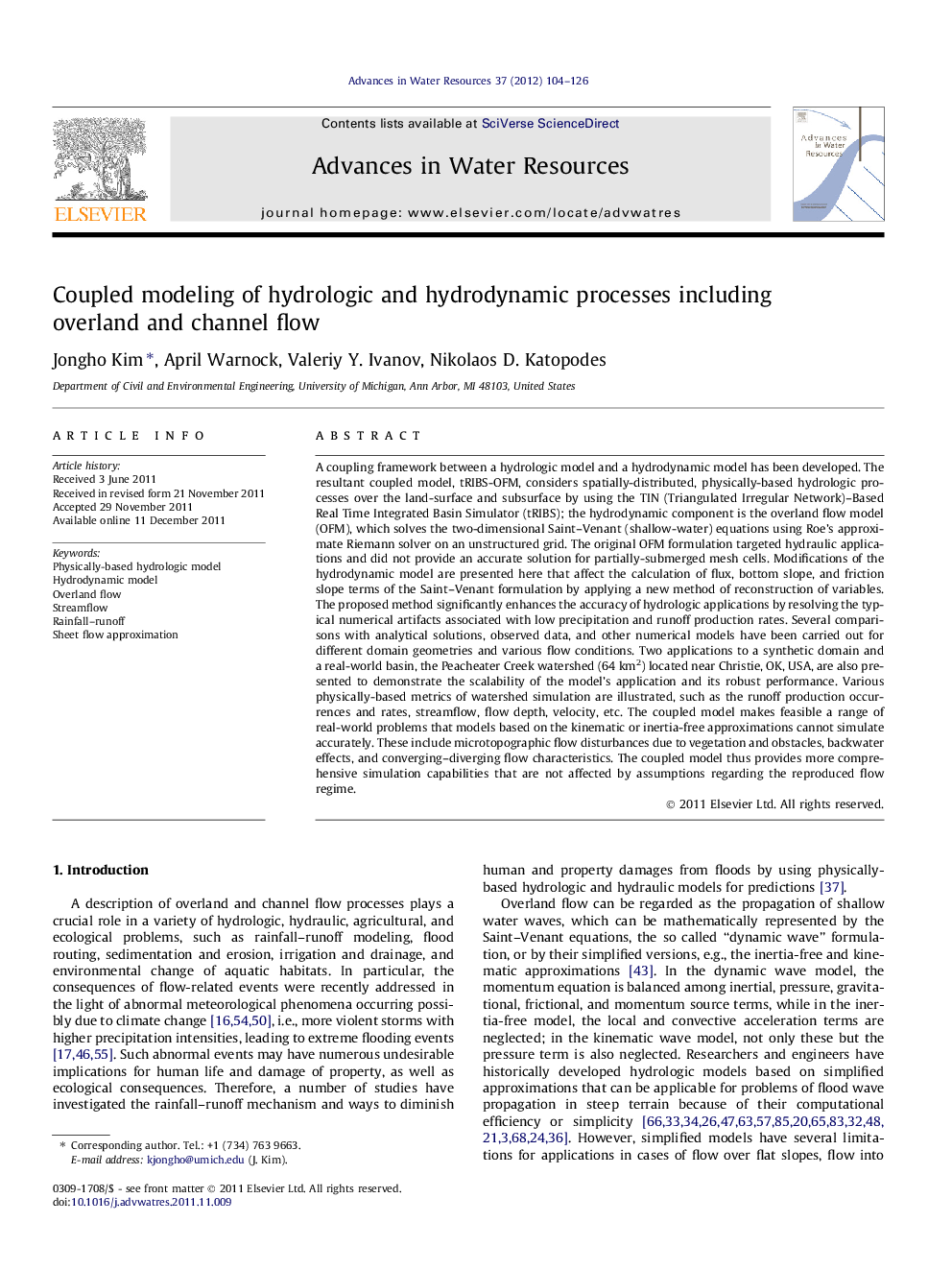| کد مقاله | کد نشریه | سال انتشار | مقاله انگلیسی | نسخه تمام متن |
|---|---|---|---|---|
| 4525983 | 1625671 | 2012 | 23 صفحه PDF | دانلود رایگان |

A coupling framework between a hydrologic model and a hydrodynamic model has been developed. The resultant coupled model, tRIBS-OFM, considers spatially-distributed, physically-based hydrologic processes over the land-surface and subsurface by using the TIN (Triangulated Irregular Network)–Based Real Time Integrated Basin Simulator (tRIBS); the hydrodynamic component is the overland flow model (OFM), which solves the two-dimensional Saint–Venant (shallow-water) equations using Roe’s approximate Riemann solver on an unstructured grid. The original OFM formulation targeted hydraulic applications and did not provide an accurate solution for partially-submerged mesh cells. Modifications of the hydrodynamic model are presented here that affect the calculation of flux, bottom slope, and friction slope terms of the Saint–Venant formulation by applying a new method of reconstruction of variables. The proposed method significantly enhances the accuracy of hydrologic applications by resolving the typical numerical artifacts associated with low precipitation and runoff production rates. Several comparisons with analytical solutions, observed data, and other numerical models have been carried out for different domain geometries and various flow conditions. Two applications to a synthetic domain and a real-world basin, the Peacheater Creek watershed (64 km2) located near Christie, OK, USA, are also presented to demonstrate the scalability of the model’s application and its robust performance. Various physically-based metrics of watershed simulation are illustrated, such as the runoff production occurrences and rates, streamflow, flow depth, velocity, etc. The coupled model makes feasible a range of real-world problems that models based on the kinematic or inertia-free approximations cannot simulate accurately. These include microtopographic flow disturbances due to vegetation and obstacles, backwater effects, and converging–diverging flow characteristics. The coupled model thus provides more comprehensive simulation capabilities that are not affected by assumptions regarding the reproduced flow regime.
► A coupling framework, between a hydrologic model and a hydrodynamic model.
► A new method of reconstruction of variables.
► Resolving the numerical artifacts associated with low precipitation and runoff.
► The coupled model provides more comprehensive simulation capabilities.
Journal: Advances in Water Resources - Volume 37, March 2012, Pages 104–126